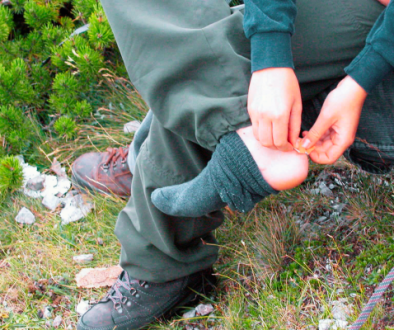7 Expert Hacks to Measure Your Foot Width for the Perfect Hiking Boots

Introduction:
Ever finished a hike with blistered feet, wondering why your boots seem to betray you on every trail? That used to be me until I made a switch that changed everything. I used to wear standard hiking boots, not realizing that the narrow toe box was the culprit behind my constant blisters. Then, I tried a pair with a wider toe box, and suddenly, no more blisters! But just as my feet were starting to enjoy the extra space, I faced another surprise plantar fasciitis. My feet were getting stronger from all the hiking, and I needed the right boots to support that. If you’re dealing with anything similar, I’m here to help. In this guide, I’ll share seven simple ways to measure your foot width so you can find boots that feel like they’re made just for you. Trust me your feet will thank you!
Why Foot Width Matters for Hikers
Before we jump into the measurement tips, let’s talk about why foot width is so important. Did you know that 72% of people are wearing shoes that don’t fit properly? For hikers, that can cause all kinds of problems:
- Blisters and hot spots
- Numbness and tingling
- Less stability on rough terrain
- Increased risk of sprains
- Faster wear on your boots
The right boot width is key to staying comfortable and safe on the trail. And once you get it right, you’re not just avoiding discomfort, you’re improving your overall hiking performance.
The Paper Test: Simple but Effective
Let’s start with an easy, at-home test: the paper test. It’s quick and gives you a basic idea of your foot width. Here’s how to do it:
- Lay a piece of paper on a hard surface.
- Stand on it with your full weight.
- Trace the outline of your foot with a pencil.
- Measure the widest part of the outline.
Pro tip: Measure in the evening when your feet are a little swollen, just like they get after a day of hiking!
The Ruler Method: A Bit More Precision
If you want a more precise measurement:
- Stand on a ruler with your foot placed flat, starting at the zero mark.
- Note where the widest part of your foot hits.
Don’t forget our feet aren’t always symmetrical, so measure both feet and use the larger width when buying your boots.
The String Technique: Great for Curved Feet
If you’ve got more curve to your feet, try the string method:
- Wrap a string around the widest part of your foot.
- Mark where the ends overlap.
- Lay the string flat and measure it.
This method is fantastic for those with unique foot shapes who need a more personalized measurement.
High-Tech Help: Foot Scanning
Many outdoor retailers now offer foot scanning technology, which can be a game-changer if you’ve had trouble finding the right fit. These scans provide a 3D map of your foot, taking into account not just width but also length and arch height. Some even offer recommendations based on your foot’s unique shape.
Check out stores like Sole Mechanics for their expert fitting services and cutting-edge technology.
The Wet Test: Understanding Your Arch Type
Knowing your arch type is just as important as knowing your foot width. To find out yours, try the wet test:
- Wet your foot.
- Step onto a piece of dark paper.
- Look at the shape of your footprint.
- If you see most of your foot, you have low arches and might need wider boots.
- If you see about half your foot, your arches are normal.
- If you see just your heel and ball with a thin line on the outside, you have high arches and may need a narrower fit.
This test helps ensure your boots will provide the right level of support in addition to fitting correctly.
Get a Professional Fit
While DIY methods work well, nothing beats a professional fitting. Many outdoor stores offer free fitting services, where an expert can measure your foot with a device, assess your gait, and recommend boots based on your specific hiking needs.
Head over to Sole Mechanics to get personalized help from the pros.
FAQs: Common Fit Questions
How often should I measure my feet?
Measure your feet once a year, as changes in weight, aging, and other factors can affect size and shape over time.
Should I measure with or without socks?
Always measure with the socks you plan to wear on your hikes—hiking socks can significantly affect boot fit.
When’s the best time of day to measure?
Measure in the late afternoon or evening, when your feet are slightly swollen from the day’s activities, just like they would be on a hike.
How much space should there be in my boots?
There should be about a thumb’s width of space between your longest toe and the end of the boot. Your foot should feel snug, but not cramped.
More information about sizing. CLICK HERE!
Conclusion: Find the Perfect Fit
Now that you’ve got these seven expert hacks in your back pocket, you’re ready to find hiking boots that fit like a dream. Remember, a perfect fit doesn’t just make you more comfortable, it can improve your hiking performance and help prevent injuries. Take your time, measure carefully, and don’t hesitate to seek out expert help if needed. Your feet deserve the best, and with the right boots, happy trails (and happy feet) are just ahead!




